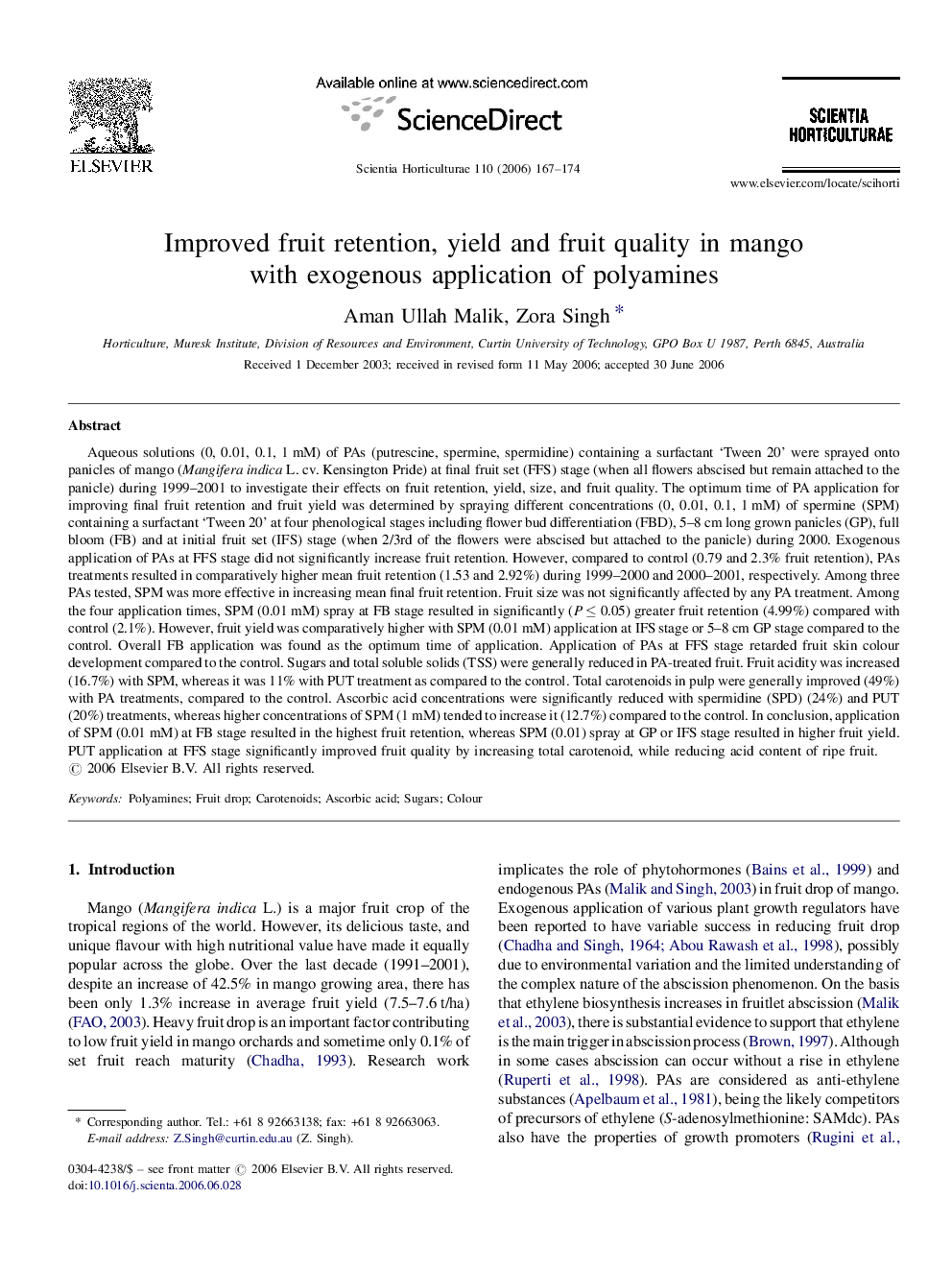| کد مقاله | کد نشریه | سال انتشار | مقاله انگلیسی | نسخه تمام متن |
|---|---|---|---|---|
| 4570059 | 1331369 | 2006 | 8 صفحه PDF | دانلود رایگان |

Aqueous solutions (0, 0.01, 0.1, 1 mM) of PAs (putrescine, spermine, spermidine) containing a surfactant ‘Tween 20’ were sprayed onto panicles of mango (Mangifera indica L. cv. Kensington Pride) at final fruit set (FFS) stage (when all flowers abscised but remain attached to the panicle) during 1999–2001 to investigate their effects on fruit retention, yield, size, and fruit quality. The optimum time of PA application for improving final fruit retention and fruit yield was determined by spraying different concentrations (0, 0.01, 0.1, 1 mM) of spermine (SPM) containing a surfactant ‘Tween 20’ at four phenological stages including flower bud differentiation (FBD), 5–8 cm long grown panicles (GP), full bloom (FB) and at initial fruit set (IFS) stage (when 2/3rd of the flowers were abscised but attached to the panicle) during 2000. Exogenous application of PAs at FFS stage did not significantly increase fruit retention. However, compared to control (0.79 and 2.3% fruit retention), PAs treatments resulted in comparatively higher mean fruit retention (1.53 and 2.92%) during 1999–2000 and 2000–2001, respectively. Among three PAs tested, SPM was more effective in increasing mean final fruit retention. Fruit size was not significantly affected by any PA treatment. Among the four application times, SPM (0.01 mM) spray at FB stage resulted in significantly (P ≤ 0.05) greater fruit retention (4.99%) compared with control (2.1%). However, fruit yield was comparatively higher with SPM (0.01 mM) application at IFS stage or 5–8 cm GP stage compared to the control. Overall FB application was found as the optimum time of application. Application of PAs at FFS stage retarded fruit skin colour development compared to the control. Sugars and total soluble solids (TSS) were generally reduced in PA-treated fruit. Fruit acidity was increased (16.7%) with SPM, whereas it was 11% with PUT treatment as compared to the control. Total carotenoids in pulp were generally improved (49%) with PA treatments, compared to the control. Ascorbic acid concentrations were significantly reduced with spermidine (SPD) (24%) and PUT (20%) treatments, whereas higher concentrations of SPM (1 mM) tended to increase it (12.7%) compared to the control. In conclusion, application of SPM (0.01 mM) at FB stage resulted in the highest fruit retention, whereas SPM (0.01) spray at GP or IFS stage resulted in higher fruit yield. PUT application at FFS stage significantly improved fruit quality by increasing total carotenoid, while reducing acid content of ripe fruit.
Journal: Scientia Horticulturae - Volume 110, Issue 2, 9 October 2006, Pages 167–174